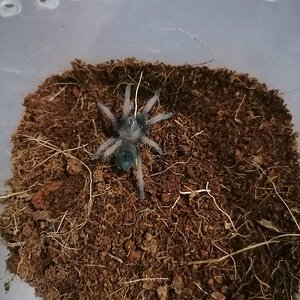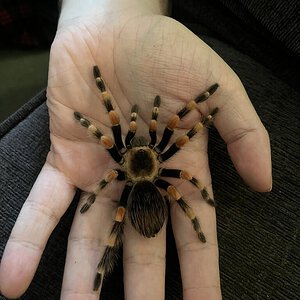I bought it because it was dehydrated nearly dying so I felt bad and bought it to revive it at home . The seller didn’t specify what species it is. When I asked him he said he doesn’t know what species it is. She is 6-7 inches in dls and probably a female. I first thought she a was selenocosmia sp
Media information
- Category
- Tarantula Identification
- Added by
- Pelicand
- Date added
- View count
- 553
- Comment count
- 10
- Rating
- 0.00 star(s) 0 ratings
Image metadata
- Filename
- 2B78A2BD-A6D5-4904-8DFA-170045166549.jpeg
- File size
- 1.9 MB
- Dimensions
- 4032px x 3024px







